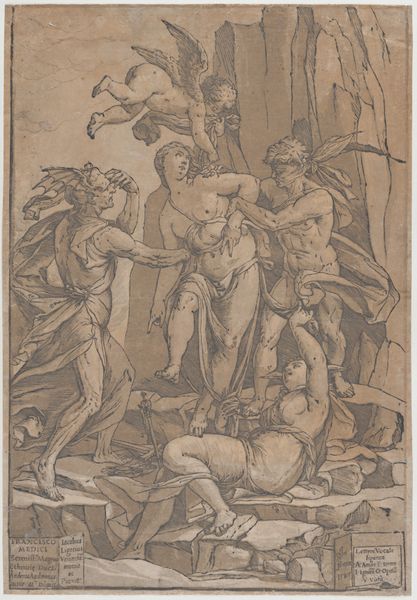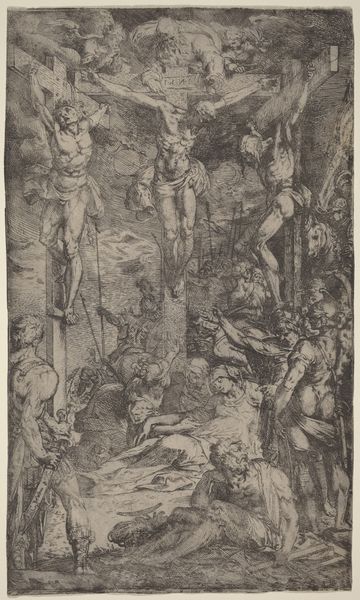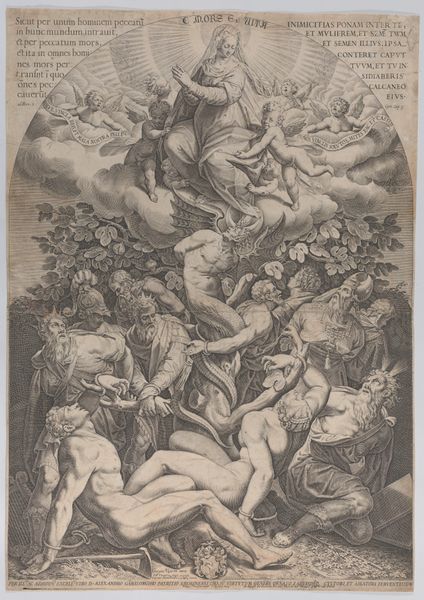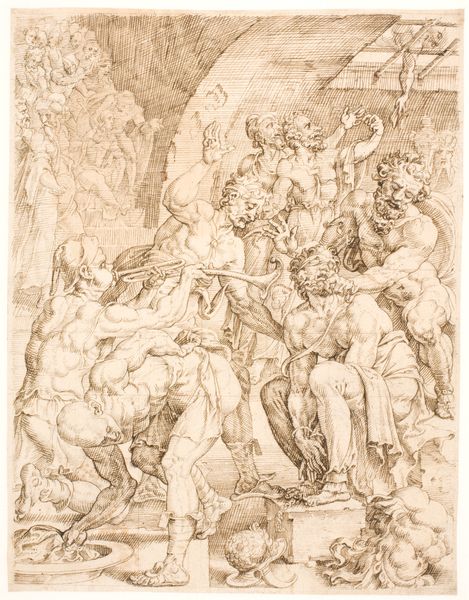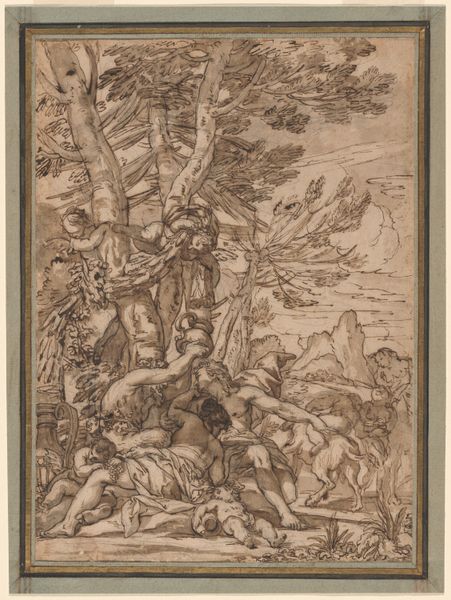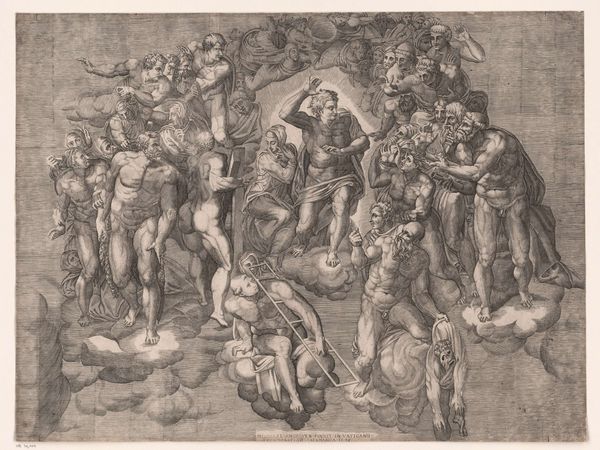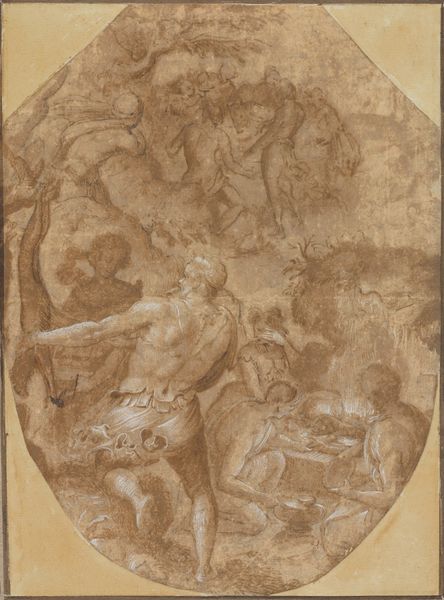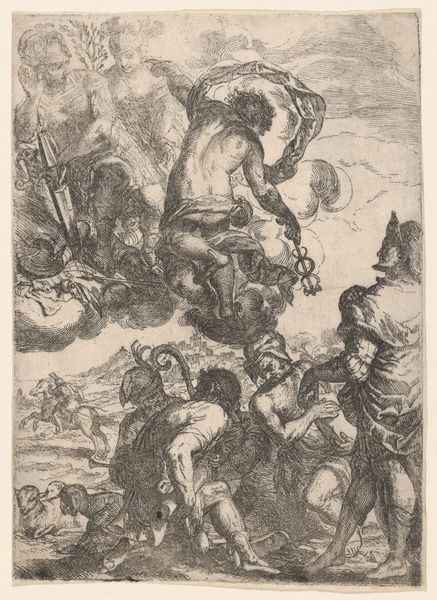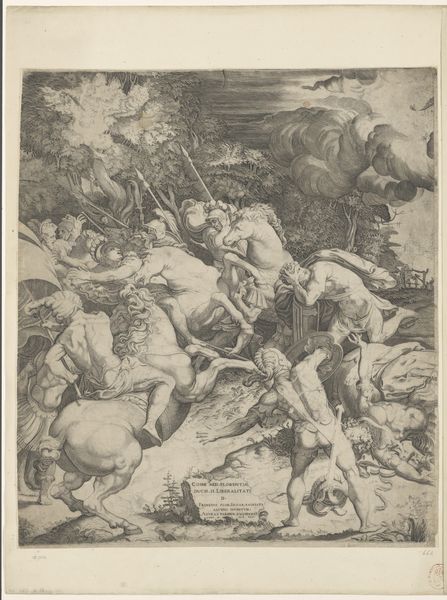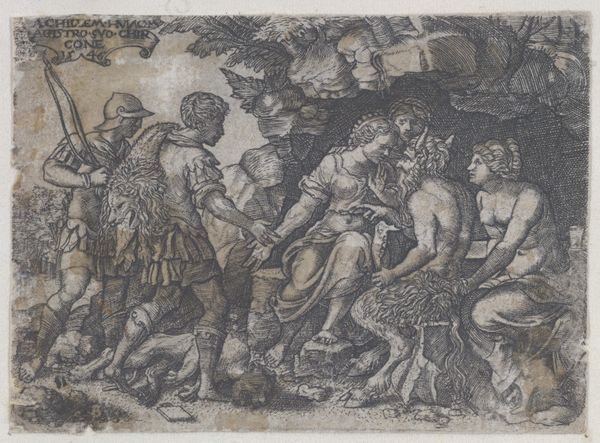
drawing, print, ink, charcoal
#
drawing
#
ink painting
# print
#
charcoal drawing
#
figuration
#
11_renaissance
#
ink
#
charcoal
#
nude
Dimensions: 12-5/16 x 9-1/4 in. (31.2 x 23.5 cm)
Copyright: Public Domain
Curator: We’re looking at “Rinaldo and Armida,” a drawing by Giovanni Baglione. Its execution probably falls somewhere between 1566 and 1643, and it now resides here at The Met. Editor: Wow, this has that dreamy, slightly unsettling vibe. Everything kind of swirls together—figures, architecture, clouds. A sensual daydream, maybe? Curator: Precisely. Baglione is illustrating an episode from Tasso’s epic poem "Gerusalemme Liberata.” It depicts the sorceress Armida enchanting the crusader Rinaldo in her magical garden. These narratives, and especially the exoticizing lens they adopted were hugely popular at the time, fueling imaginations and reflecting complex attitudes toward the “Orient.” Editor: "Enchanting" is putting it mildly! He looks completely out of it, lolling there like a marble Adonis while she's crowning him with flowers. Talk about giving up control! What's interesting is the passivity they are both radiating: they both appear more as characters in a drama that is unfolding around them and less like autonomous subjects making decisions for themselves. There's a subtle tension, isn’t there, between vulnerability and control? Curator: Absolutely, that tension is central. Think about the artistic conventions being employed. Baglione’s source material in both classical and renaissance precedents dictated not just the narrative elements, but the overall compositional structure, what one *should* depict when exploring such subjects, especially as this impacted male authority and anxieties around female power. It mirrors how European authority asserted dominance over foreign bodies, yet they became enthralled by those same bodies! Editor: I guess you’re right. And then you see the cherubs hovering above, cupid down below...are these a playful innocence of childhood—or more active participation? It feels as though those cherubic faces may as well have been adult voyeurs staring on the tableau. Curator: These are carefully placed elements that reinforce and complicate the central themes. They serve as witnesses, underscoring the very public drama of private desires. I mean, this really exemplifies the historical entanglement between art and power in the period after the Council of Trent. Editor: You’ve certainly given me more to ponder here. I was taken in by the beautiful scene but failed to appreciate the depth it has underneath the immediate appeal. Curator: Well, it speaks to how artists engaged with classical themes but then loaded them with contemporary meaning. I appreciate you engaging with that complexity, while I appreciate the artist's attention to details with pen and ink, something the photo on the wall here does not provide at the moment.
Comments
No comments
Be the first to comment and join the conversation on the ultimate creative platform.
